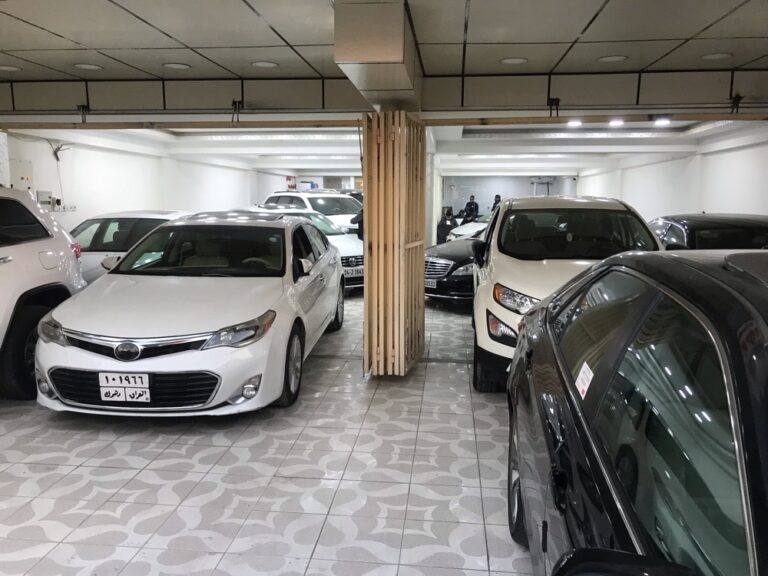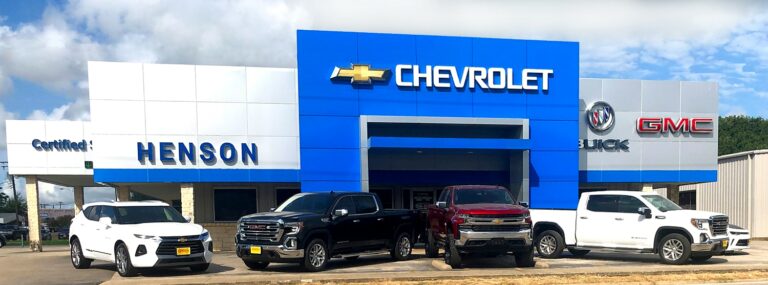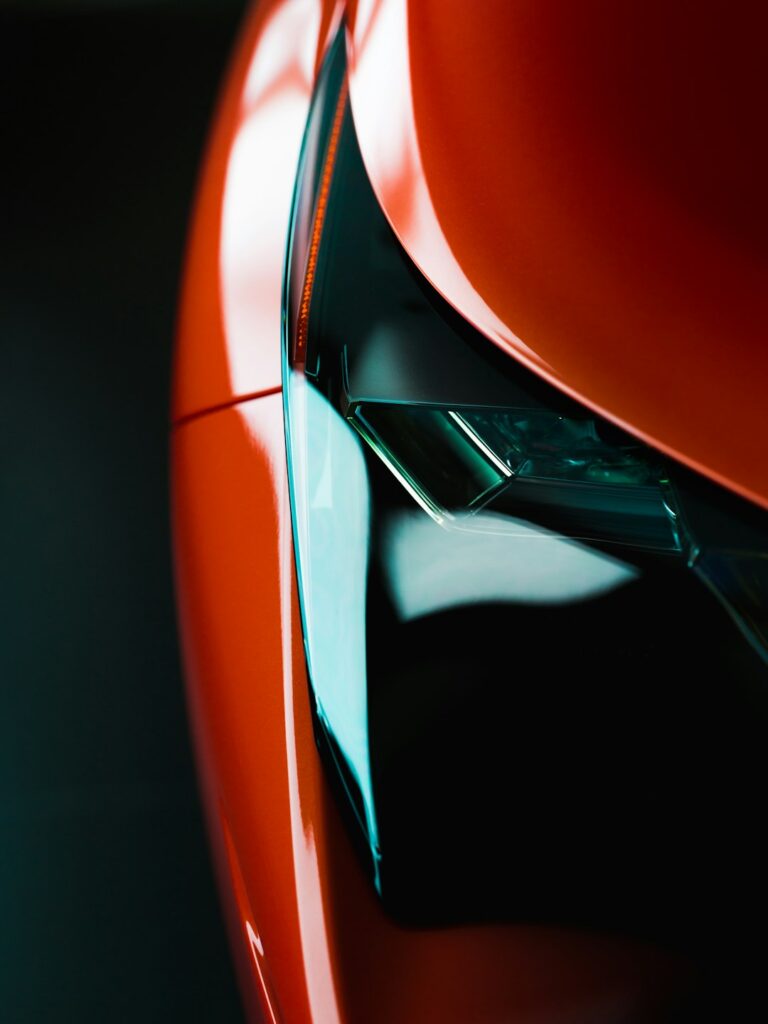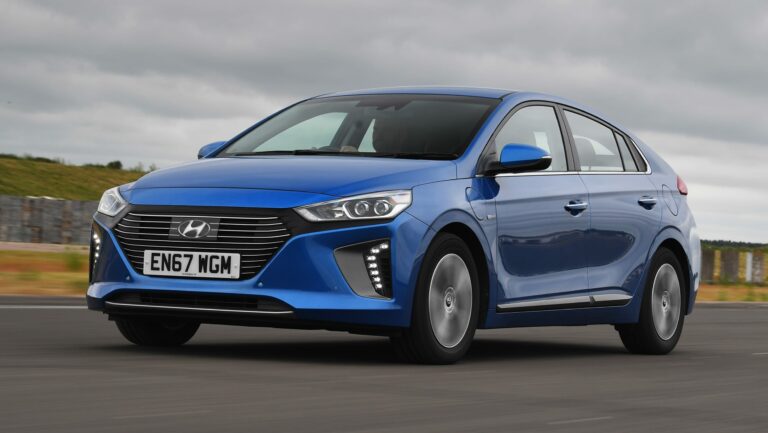Cheap Luxury Car Brands: Your Guide to Affordable Elegance
Cheap Luxury Car Brands: Your Guide to Affordable Elegance cars.truckstrend.com
The dream of owning a luxury car often conjures images of exorbitant price tags, exclusive dealerships, and a lifestyle out of reach for most. However, a fascinating segment of the automotive market defies this perception: Cheap Luxury Car Brands. This isn’t an oxymoron; rather, it represents a savvy approach to acquiring premium vehicles that have significantly depreciated from their original sticker price, making them accessible to a much broader audience.
In essence, "cheap luxury" refers to the art of purchasing a high-end, feature-rich vehicle at a fraction of its new cost. It’s about leveraging the steep depreciation curve that afflicts most luxury cars, transforming them into incredible value propositions on the used market. For those who appreciate superior comfort, advanced technology, refined performance, and a touch of prestige without breaking the bank, understanding this niche is paramount. This comprehensive guide will navigate the landscape of affordable elegance, providing you with the knowledge and tools to make an informed and satisfying purchase.
Cheap Luxury Car Brands: Your Guide to Affordable Elegance
What Defines "Cheap Luxury" in the Automotive World?
The term "cheap luxury" isn’t about shoddy craftsmanship or stripped-down models. It fundamentally describes a luxury car that has undergone significant depreciation, making it affordable on the used market. When a luxury car rolls off the lot, it typically loses a substantial percentage of its value within the first few years. This rapid depreciation, while painful for the original owner, becomes a golden opportunity for the second (or third) buyer.
A "cheap luxury" car still embodies the core tenets of luxury:
- Superior Materials: High-quality leather, genuine wood, aluminum, and soft-touch plastics.
- Advanced Technology: Cutting-edge infotainment, driver-assistance features, sophisticated climate control.
- Refined Performance: Smooth, powerful engines, precise handling, quiet cabins.
- Comfort and Ergonomics: Plush seating, ample space, thoughtful design.
- Prestige and Brand Image: The inherent status associated with renowned luxury marques.

The "cheap" aspect refers purely to the acquisition cost. It’s crucial to understand that while the purchase price is low, the ongoing ownership costs (maintenance, parts, insurance) can still reflect the vehicle’s original luxury status. This balance is key to a successful "cheap luxury" experience.
Why Choose a "Cheap Luxury" Car? The Allure of Value
The appeal of a cheap luxury car extends beyond just the initial savings. It offers a unique blend of benefits that are hard to find elsewhere:

- Unbeatable Value for Money: For the price of a new mid-range compact car, you can often acquire a used luxury sedan or SUV that originally cost two or three times as much. This means access to features, performance, and comfort that would otherwise be out of reach.
- Enhanced Driving Experience: Luxury vehicles are engineered for a superior ride. They offer quieter cabins, smoother suspensions, more powerful engines, and often more precise handling than their mainstream counterparts.
- Premium Features and Technology: Enjoy amenities like heated and cooled seats, premium audio systems, adaptive cruise control, panoramic sunroofs, advanced navigation, and sophisticated safety features that were once cutting-edge and exclusive.
- Increased Safety: Luxury brands often pioneer safety technologies, meaning older luxury models may still offer more advanced passive and active safety features than many new budget cars.
- Depreciation Advantage: While the first owner absorbed the steepest depreciation, you, as the second owner, benefit from a much slower rate of depreciation moving forward, potentially making it a more stable investment in terms of retained value.
- Prestige and Comfort: There’s an undeniable sense of satisfaction and comfort that comes with driving a well-engineered, luxurious vehicle. It elevates your daily commute and long-distance travel.
Top Contenders: Brands That Offer Affordable Luxury
While almost any luxury car will eventually become "cheap" on the used market, some brands and models offer a better blend of initial affordability, reasonable reliability, and manageable maintenance costs. Here are some of the prime candidates:
1. Lexus (Toyota’s Luxury Arm)
- Why: Renowned for bulletproof reliability, excellent build quality, and a smooth, comfortable ride. Their depreciation is generally slower than European rivals, but older models still represent fantastic value.
- Recommended Models: ES (mid-size sedan), LS (full-size flagship sedan), RX (mid-size SUV).
- Pros: Legendary reliability, low long-term running costs for a luxury brand, comfortable, quiet cabins.
- Cons: Can be perceived as less "sporty" than German rivals, conservative styling.
2. Acura (Honda’s Luxury Arm)
- Why: Offers a blend of Honda’s reliability with sporty performance and well-appointed interiors. Their value proposition on the used market is very strong.
- Recommended Models: TL/TLX (mid-size sedan), TSX (compact sport sedan), MDX (mid-size SUV).
- Pros: Honda reliability, engaging driving dynamics, high-quality interiors, often good tech for their era.
- Cons: Can have a firmer ride than Lexus, infotainment systems can be complex in older models.
3. Infiniti (Nissan’s Luxury Arm)
- Why: Known for powerful engines (especially the VQ V6), sporty rear-wheel-drive platforms, and distinctive styling. They depreciate quickly, making them excellent used buys.
- Recommended Models: G37/Q50 (compact sport sedan), M37/Q70 (mid-size sedan), FX/QX70 (sporty SUV).
- Pros: Strong performance, engaging to drive, generally reliable powertrains, unique styling.
- Cons: Interior quality can feel a step below some rivals, fuel economy can be an issue with larger engines.
4. Volvo
- Why: Synonymous with safety, but also offers exceptionally comfortable seats, elegant Scandinavian design, and a unique driving experience. They depreciate steadily.
- Recommended Models: S60 (compact sedan), S80 (mid-size sedan), XC60/XC90 (SUVs).
- Pros: Unparalleled safety features, incredibly comfortable, distinctive design, strong engine options.
- Cons: Some specific engine issues (e.g., T6 engines), parts can be pricier, not as widely available for servicing.
5. Cadillac
- Why: America’s luxury brand has made significant strides in performance and design. Older models, particularly the CTS and ATS, offer bold styling and engaging dynamics at low prices.
- Recommended Models: CTS (mid-size sedan), ATS (compact sport sedan), SRX (mid-size SUV).
- Pros: Distinctive American luxury, often powerful engines, good handling for their class.
- Cons: CUE infotainment system (earlier versions) can be frustrating, interior quality can be inconsistent.
6. Older German Marques (BMW, Mercedes-Benz, Audi)
- Why: The pinnacle of luxury and performance, these brands offer an unparalleled driving experience. Their depreciation is steep, especially for higher mileage models.
- Recommended Models: BMW 3 Series/5 Series, Mercedes-Benz C-Class/E-Class, Audi A4/A6.
- Pros: Superior driving dynamics, cutting-edge technology (for their time), immense brand prestige.
- Cons: Crucially, these cars come with significantly higher maintenance and repair costs. Parts are expensive, and specialized labor is often required. A pre-purchase inspection is non-negotiable. Buy with your eyes wide open, or avoid if budget for repairs is tight.
Key Considerations When Buying "Cheap Luxury"
Purchasing a used luxury car requires a more meticulous approach than buying a mainstream vehicle. These factors are critical:
- Maintenance Costs: This is the biggest catch. While the purchase price is low, luxury cars are built with complex systems and often proprietary parts. Expect higher costs for routine service, specialized fluids, and any unexpected repairs. European brands typically have the highest maintenance overhead.
- Reliability: Research specific models and years for known issues. While Lexus and Acura are generally reliable, even they can have quirks. German cars, while engineered beautifully, are often less reliable as they age and become much more expensive to fix.
- Parts Availability and Cost: Ensure parts are readily available and not prohibitively expensive. This ties into maintenance costs.
- Fuel Economy: Many older luxury cars feature larger, more powerful engines, which can translate to lower MPG figures and higher fuel bills.
- Insurance Costs: Luxury cars, even older ones, can be more expensive to insure due to their higher initial value, cost of parts, and potential for higher repair bills after an accident.
- Depreciation: While you benefit from past depreciation, understand that the car will continue to depreciate, albeit at a slower rate.
- Technology Obsolescence: Older luxury cars might have advanced tech for their time, but it can feel dated compared to modern systems, and updates might not be available.
Tips for Finding and Buying Your Affordable Luxury Car
Navigating the used luxury market successfully requires diligence:
- Do Your Homework: Research specific models, engine options, and common issues for the years you’re considering. Owner forums are a goldmine of information.
- Set a Realistic Budget (Including Maintenance): Don’t just budget for the purchase price. Set aside a significant contingency fund (e.g., $1,000-$3,000 per year) for unexpected repairs, especially for European brands.
- Prioritize Vehicle History: Always get a Vehicle History Report (like CarFax or AutoCheck). Look for consistent service records, accident history, and ownership changes.
- Get a Pre-Purchase Inspection (PPI): This is the single most important step. Have a trusted, independent mechanic (ideally one specializing in the brand you’re considering) thoroughly inspect the car before you buy it. This can uncover hidden problems that save you thousands.
- Test Drive Extensively: Drive the car on various roads – city, highway, bumps, turns. Listen for unusual noises, feel for vibrations, and test all features.
- Shop Around: Look at dealerships (both brand-specific and independent used car lots) and private sellers. Private sales can offer better prices but come with more risk.
- Negotiate: Always negotiate the price. Used luxury cars often have more wiggle room, especially if you’ve identified any issues during the PPI.
- Consider Certified Pre-Owned (CPO): While slightly more expensive than non-CPO used cars, CPO vehicles from dealerships come with factory-backed warranties and rigorous inspections, offering peace of mind.
The Downside: Potential Challenges
While the allure is strong, be aware of the potential pitfalls:
- Money Pits: Without proper research and a PPI, you could end up with a car that costs more to maintain than its purchase price, turning your "cheap luxury" into an expensive nightmare.
- Complex Systems: Modern luxury cars are packed with electronics and intricate mechanical systems. Diagnosing and repairing these can be costly and require specialized tools and knowledge.
- Parts Scarcity for Older Models: Very old or rare luxury models might have issues with parts availability, especially for discontinued components.
- "Badge Snobbery": Some people might look down on older luxury cars, though this is a minor social concern compared to the financial realities.
Making Your "Cheap Luxury" Last
Once you’ve acquired your affordable luxury vehicle, proactive maintenance is key to enjoying it for years to come:
- Adhere to Service Schedules: Follow the manufacturer’s recommended maintenance schedule religiously.
- Find a Reputable Independent Mechanic: Dealerships can be expensive. Find an independent shop that specializes in your car’s brand. They often offer quality service at a lower labor rate.
- Address Issues Promptly: Don’t defer repairs. Small problems can quickly escalate into major, costly ones in luxury vehicles.
- Regular Cleaning and Detailing: Maintain the car’s interior and exterior to preserve its luxurious feel and protect its value.
Table: Examples of "Cheap Luxury" Car Brands and Models (Used Market Estimates)
The following table provides estimated used price ranges for well-maintained models from roughly 5-12 years old. Prices vary wildly based on mileage, condition, trim level, and geographic location. Always perform a Pre-Purchase Inspection (PPI) and get a Vehicle History Report.
| Brand/Model (Example Years) | Typical Used Price Range (USD) | Key Luxury Features/Appeal | Pros (Value & Ownership) | Cons (Potential Challenges) |
|---|---|---|---|---|
| Lexus ES 350 (2010-2016) | $10,000 – $18,000 | Ultra-reliable, quiet, smooth ride, comfortable, plush interior | Top-tier reliability, low running costs for luxury, great comfort | Less sporty, conservative styling, older tech can feel dated |
| Acura TL/TLX (2010-2017) | $9,000 – $17,000 | Sporty handling, refined V6 engines, quality interior, SH-AWD | Honda reliability, engaging drive, good tech for the era, strong value | Some models have firm ride, infotainment can be clunky (older) |
| Infiniti G37/Q50 (2009-2016) | $8,000 – $16,000 | Powerful V6, RWD/AWD dynamics, sleek styling, engaging drive | Strong performance, relatively reliable powertrain, excellent value | Fuel economy, interior materials not always top-tier, aging tech |
| Volvo S60/S80 (2011-2017) | $9,000 – $18,000 | Exceptional safety, supremely comfortable seats, unique design | Unique styling, fantastic comfort, strong safety features, decent value | Some specific engine issues (e.g., T6), parts/service can be pricier |
| Cadillac CTS (2009-2015) | $7,000 – $15,000 | Bold styling, athletic handling, powerful engines, distinctive | American luxury, good performance, stand-out design, strong value | CUE infotainment (pre-2015) can be frustrating, inconsistent interior quality |
| BMW 3 Series (E90/F30) (2010-2016) | $8,000 – $18,000 | Benchmark driving dynamics, premium feel, iconic badge, refined | Driver’s car, strong performance, high prestige, rewarding to drive | High maintenance/repair costs, complex systems, specific engine issues |
| Mercedes-Benz C-Class (W204) (2010-2014) | $9,000 – $17,000 | Refined ride, classic luxury, comfortable cabin, prestige, solid | Mercedes prestige, comfortable cruiser, solid build, timeless design | Higher maintenance/repair costs, potential for electrical issues |
| Audi A4 (B8/B8.5) (2010-2016) | $9,000 – $17,000 | Quattro AWD, refined interior, balanced ride/handling, sophisticated | Sophisticated design, excellent AWD, good daily driver, premium feel | Higher maintenance/repair costs, oil consumption on some 2.0T engines |
Disclaimer: These are estimated prices for used vehicles and can vary significantly based on condition, mileage, features, and regional market dynamics. Always conduct thorough research and a professional inspection.
Frequently Asked Questions (FAQ) About Cheap Luxury Car Brands
Q1: Is it really "cheap" to own a luxury car, even if I buy it used?
A1: The purchase price is "cheap" relative to its original MSRP. However, the ownership costs (maintenance, parts, insurance, fuel) for a used luxury car will almost always be higher than for a comparable new or used mainstream car. Factor in a substantial budget for upkeep.
Q2: Which "cheap luxury" brands are the most reliable?
A2: Generally, Lexus and Acura are considered the most reliable choices due to their Toyota and Honda engineering roots. Infiniti also tends to be quite reliable. European brands (BMW, Mercedes-Benz, Audi, Volvo) can be reliable when new and well-maintained, but they are often significantly more expensive to repair as they age.
Q3: How much should I budget for maintenance on a used luxury car?
A3: This varies wildly by brand and model. For reliable Japanese luxury cars (Lexus, Acura), budget $800-$1,500 annually for routine maintenance and minor unexpected repairs. For European brands, especially BMW, Mercedes-Benz, and Audi, budget $1,500-$3,000+ annually, as a single major repair can easily exceed $1,000-$2,000.
Q4: Should I buy an extended warranty for a used luxury car?
A4: For European luxury cars, an extended warranty can offer peace of mind, but carefully read the terms and conditions, as many exclude common failure points or have high deductibles. For Japanese luxury cars, it’s less critical given their higher reliability. Always weigh the cost of the warranty against the potential repair costs.
Q5: What’s the most important thing to do before buying a used luxury car?
A5: Get a Pre-Purchase Inspection (PPI) from an independent mechanic specializing in that brand. This is non-negotiable. It can identify hidden issues that could save you thousands in future repairs.
Q6: Will older luxury cars have outdated technology?
A6: Yes, technology evolves rapidly. While an older luxury car will have more advanced features than a basic new car, its infotainment, navigation, and driver-assistance systems will likely feel less intuitive or modern compared to current models. Connectivity options might also be limited.
Conclusion: The Smart Path to Automotive Sophistication
The concept of "cheap luxury car brands" is a testament to the dynamic nature of the automotive market. It offers a compelling opportunity for discerning buyers to experience the prestige, comfort, and performance of a premium vehicle without the prohibitive cost of buying new. By understanding the nuances of depreciation, diligently researching models, prioritizing thorough inspections, and budgeting realistically for ongoing maintenance, you can unlock a world of affordable elegance.
While the journey to ownership requires a savvy approach, the rewards are undeniable. Driving a luxury car, even one acquired at a fraction of its original price, transforms daily commutes into refined experiences and long journeys into comfortable adventures. It’s not just about the badge; it’s about the superior engineering, the thoughtful design, and the elevated driving experience. With the right knowledge and a disciplined approach, your dream of affordable luxury can become a very satisfying reality.






